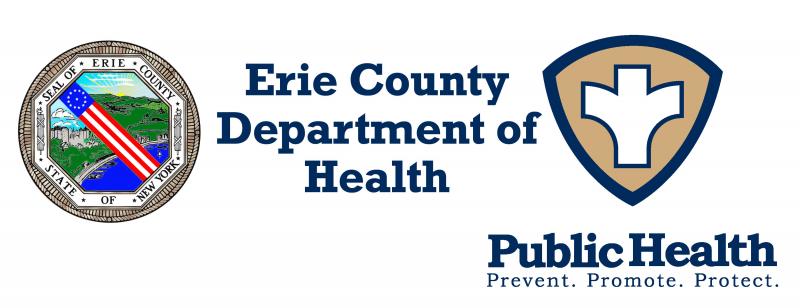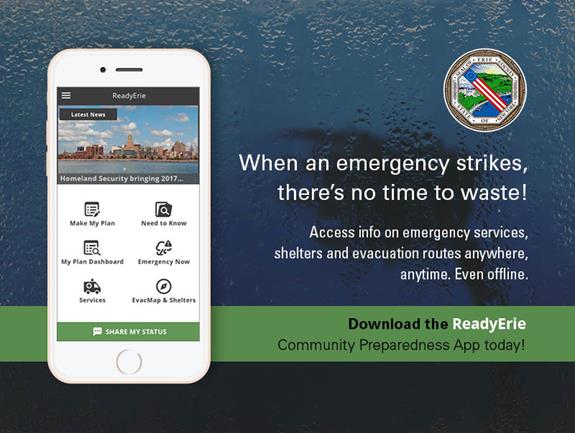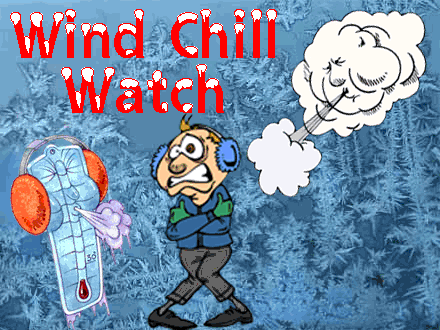Modified: December 5, 2017 6:01pm
Latest News

PRESS RELEASE
From the Office of the Commissioner of Health, Dr. Gale R. Burstein
Date December 6, 2017
Contact: Mary C. St. Mary/Mary.StMary@Erie.Gov
Phone: 716.858.4941/ Mobile: 716.253.3925
Winter Weather Safety Reminders
Stay Warm & Safe with these Timely Tips!
ERIE COUNTY, NY— Winter weather—cold temperatures and snow—has finally arrived. It is time for a friendly reminder on key cold weather tips! “Staying warm can be a challenge during low temperatures that are accompanied with a significant wind chill,” said Erie County Health Commissioner Dr. Gale Burstein. “Prolonged exposure to cold temperatures can cause serious or life-threatening health problems. Anyone can be affected. Infants and the elderly are particularly at risk. Keep yourself and your family safe and prevent cold weather-related health problems by staying aware of winter weather conditions to plan and dress appropriately.”

Another strategy to prepare for winter weather is to download the ReadyErie app to your smartphone. This free app provides you with numerous helpful tips to be prepared for anytime of emergency, not only snowstorms and cold weather. In the “Need to Know” section of ReadyErie, there is a Winter Storms E-Guide with information on Winter Storm Basics, Preparing Your Home for Winter, Preparing for Outdoor Activities and What to Do During a Winter Storm. It is available in both iPhone and Android formats.
Preparation Activities
- Keep adequate supplies on hand at home: a 3-day supply of non-perishable food, water, extra blankets, first aid kit, fire extinguisher, one week supply of essential medications and flashlights with extra batteries. A similar emergency preparedness kit at your workplace might also be advisable.
- Traveling by Car: Keep an emergency kit on hand should you become stranded. Include a small amount of non-perishable food, especially if you have diabetes (granola bars, dried fruit, beef jerky, water).
- Snow tires are highly recommended to significantly improved traction and handling.
- Winterize your vehicle with appropriate fluids. Add sand/kitty litter, shovel and blanket to your emergency kit.
- Maintain at least ½ tank of gasoline at all times in case you become stranded.
- Be aware of the danger of Carbon Monoxide (“CO”) poisoning. Every year, 500 people in the U.S. die from accidental CO poisoning. CO is tasteless and odorless. CO detectors are essential.
- Check or change the batteries in your CO detectors every 6 months. If you do not have a battery-powered or battery-backup CO detector, make buying one a priority.
- Leave your home immediately if your CO detector sounds and call 911. Do not assume the detector is in error.
- Symptoms of Carbon Monoxide Poisoning include headache, dizziness, weakness, nausea, vomiting, chest pain and confusion. People who are sleeping or who have been drinking alcohol can die from CO poisoning before ever developing symptoms.
- Never use portable generators indoors and make sure they are at least 20 feet away from your dwelling.
- Never use your oven or range to heat your home.
- Never use charcoal or gasoline-powered equipment indoors.
- Never idle a car in the garage.
- Never sleep in rooms where unvented gasoline or kerosene heaters are present.
Dealing with Snow
“Dealing with extreme cold and snow removal can put a tremendous strain on your body,” states Burstein. “Working in the cold, including snow shoveling or using a snow blower, puts added strain on your heart which can lead to sudden heart attacks. Especially when you have high blood pressure or cardiovascular disease, be sure to follow your health care provider’s advice before undertaking such strenuous activities.”
- A common cause of winter injuries is falling when walking on snow or ice covered surfaces. Use a deicer to melt ice on walkways and wear appropriate warm footwear, such as boots with good tread.

Cold Weather
- Prolonged exposure to cold temperatures can cause serious or life-threatening health problems
- Infants and the elderly are particularly at risk
- Children lose body heat more rapidly than adults; they need to be dressed warmly and closely monitored while outdoors in extreme cold
- As wind speeds (wind chill) increase, heat can leave your body more rapidly.
- If possible, try to stay indoors. Trips outside should be as brief as possible
- Outer layer of clothing should be tightly woven to reduce body-heat loss caused by wind
- Inner layers of clothing should be wool, silk, or polypropylene; those fabrics hold in more body heat than cotton
- When children leave the house to play outside in the snow or cold, parents/caregivers should monitor their dress to ensure their bodies, including face, feet, and hands, are adequately protected.
- Do not leave pets outdoors or in an unheated vehicle for any length of time
- Shivering is an important first sign that the body is losing heat. Persistent shivering means it is time to go indoors!
- Hypothermiaoccurs when the body’s core temperature drops below normal.
- Symptoms include uncontrolled shivering slow speech, memory lapses, frequent stumbling and drowsiness
- Frostbiteis caused by prolonged exposure to the cold and can cause permanent damage
- Symptoms include loss of feeling, white or pale appearance in fingers, toes, ears and nose
- Parents/caregivers should check in with children playing outside to ensure that hypothermia or frostbite symptoms do not develop.
- If frostbite or hypothermia is suspected, slowly warm victim and seek immediate medical attention
# # #
For More Information
ReadyErie Information Sheet and Download Instructions
Erie County Department of Health
Centers for Disease Control and Prevention
New York State Division of Homeland Security and Emergency Services

